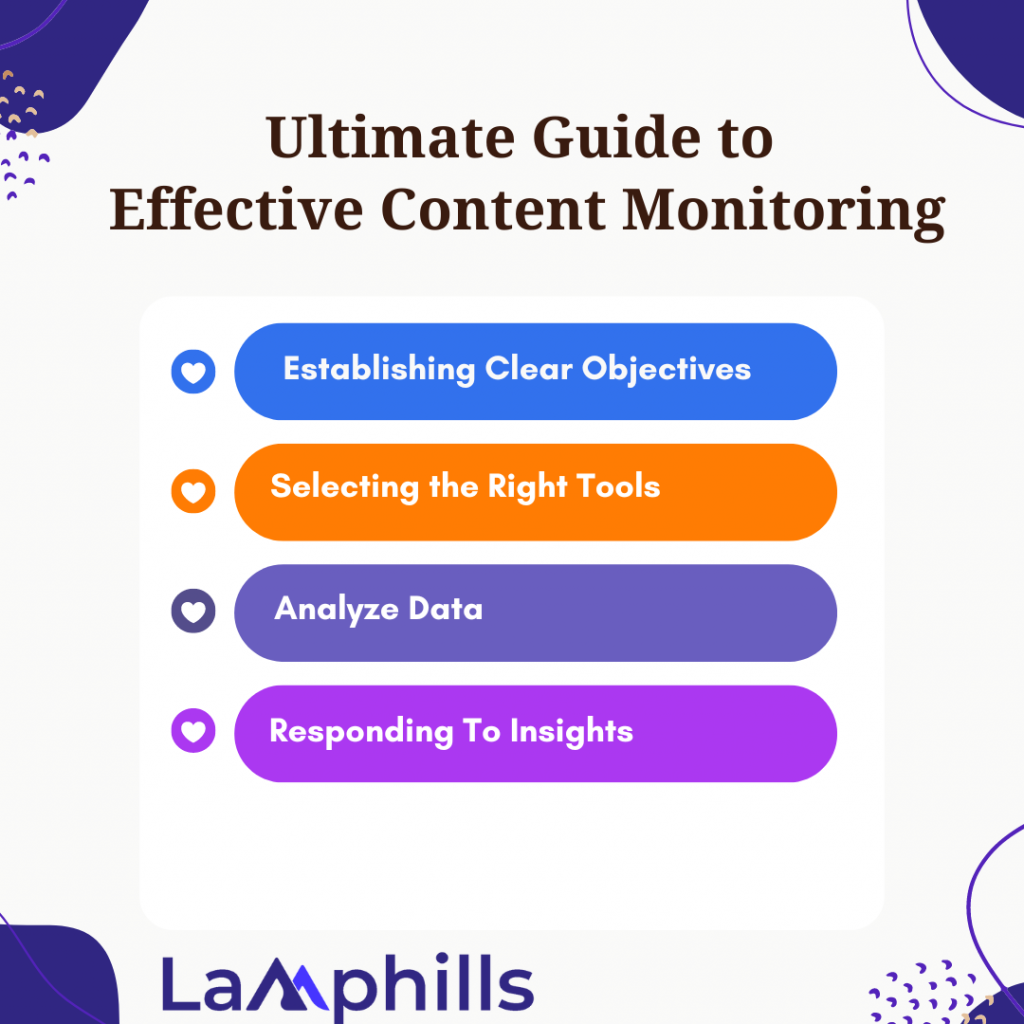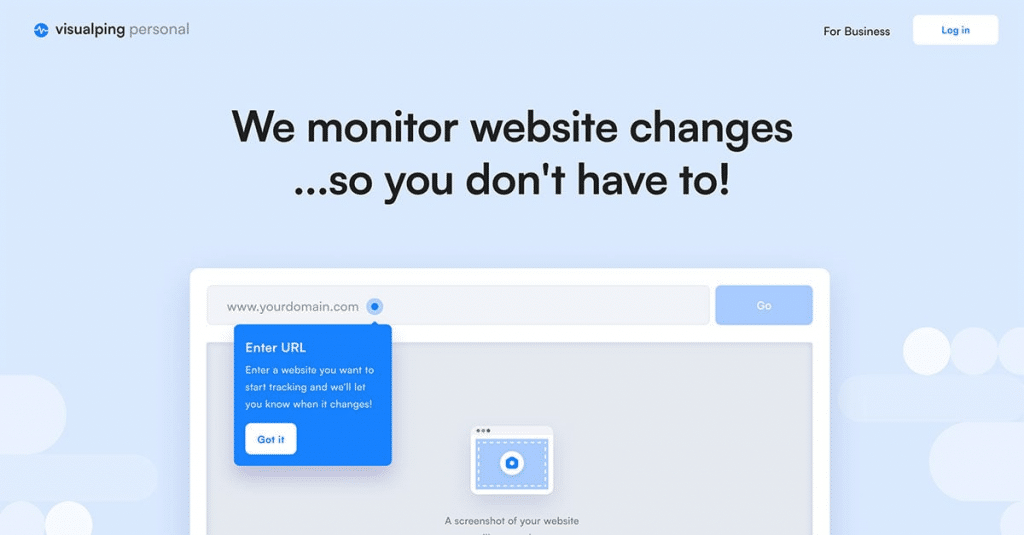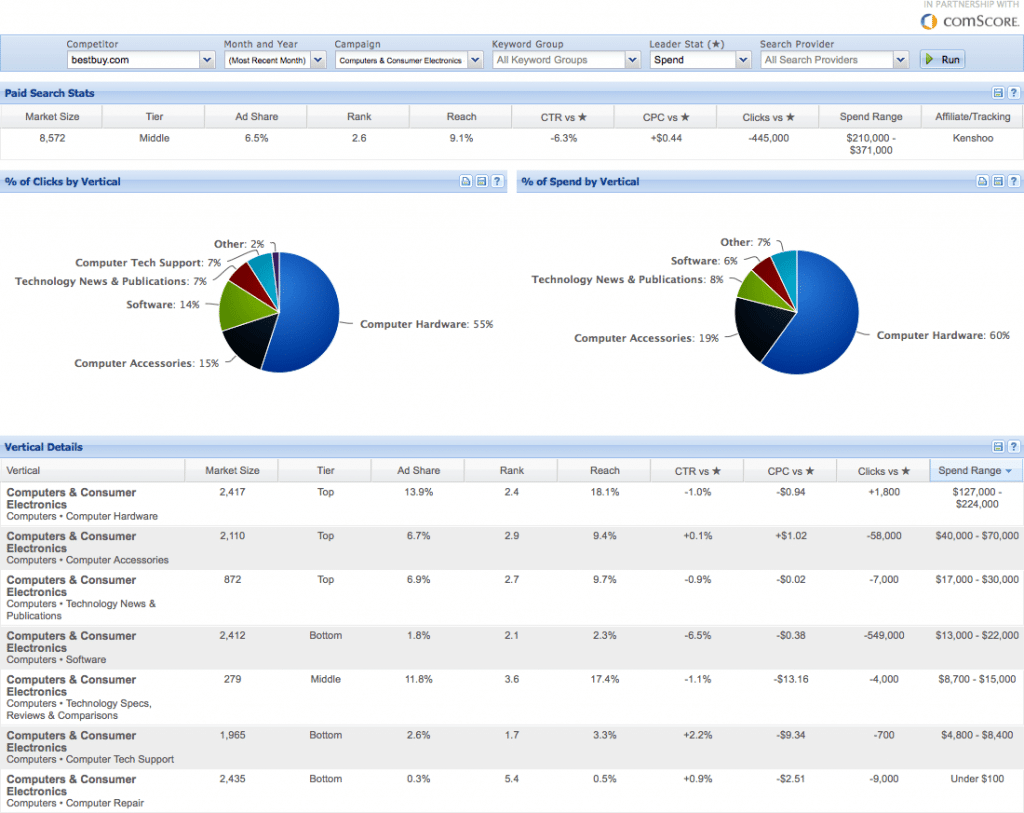When I initially began managing content for my company, I immediately realized that producing high-quality content was only half the struggle. The main problem was making sure the content was useful and resonated with my audience. This prompted me to explore the world of content monitoring. In this article, I’ll provide the definitive method for effective content monitoring for maximum outcomes, including insights and statistics that most websites overlook.
What is Content Monitoring?
Content monitoring is the process of determining how well your articles, landing sites, social media posts, and other types of content perform. Observing your competitors’ performance to gather insights that can help you better your own.
For example, if your blog posts routinely have high bounce rates or poor engagement, it could indicate that your content does not meet the needs of your target audience.
You can make adjustments from there.
If you see that a competitor’s content on specific topics receives a lot of traffic, it may suggest a great online interest in the issue.
That may inspire you to create your own content on certain themes to attract more people.
Content monitoring is a vital technique for any firm aiming to improve its content strategy. It entails monitoring, analyzing, and responding to your content’s performance across several channels. This ensures that your content not only reaches your intended audience but also effectively engages them.
Key Takeaways
- Content monitoring helps you pinpoint areas that you might be missing compared to competitors, allowing you to fill these gaps and strengthen your content strategy.
- Benchmarking against competitors through content monitoring reveals areas where your content may need improvement.
- By consistently monitoring your content, you can quickly identify and respond to the effects of Google algorithm updates, maintaining or improving your website’s visibility and rankings.
- Monitoring key content metrics such as keyword rankings, organic traffic, bounce rate, and social engagement provides valuable insights into your content’s performance.
- Leveraging tools like Google Analytics, Visualping, and SpyFu for content monitoring enables comprehensive tracking and analysis.
Why Does Content Monitoring Matter?
In the early stages of my content journey, I published articles and social media postings without fully comprehending their impact. It was not until I began monitoring my content that I noticed a big increase in engagement and conversions. According to a HubSpot analysis, firms that routinely review their marketing performance are three times more likely to meet their marketing objectives.
Content monitoring allows you to fine-tune your strategy over time to ensure that you satisfy the expectations of your audience and remain competitive in the market.
Here are five distinct benefits:
#1. Identify content gaps
Content monitoring allows you to see what content other market participants are creating that you may be overlooking. Providing you with a framework for your content marketing strategy.
Assume you utilize the Keyword Gap tool to identify terms that your competitors are ranking for (meaning they appear in search results) but you aren’t.
These keywords all signify topics that you haven’t covered or haven’t explored thoroughly enough to rank.
And you can now use this knowledge to fill in the gaps.
#2. Find optimization opportunities
Content monitoring, which includes researching your competitors, allows you to benchmark. So you can see if you need to improve—and how much.
Let’s imagine you utilize traffic analytics to compare your numbers to those of your competitors. Also, notice that your average visit duration is shorter than that of nearly all of your competitors.
That could indicate that your content isn’t comprehensive enough or was created with user intent in mind.
Improving your content to be more comprehensive and/or relevant to what users are seeking may result in greater engagement metrics and search engine results page (SERP) ranks.
#2. Reduce the impact of algorithm updates
Google algorithm adjustments might have an impact on your website’s exposure and online rankings. Monitoring your content allows you to notice the impact of such changes and adapt accordingly.
For example, Google’s 2021 and 2022 page experience improvements included Core Web Vitals (a set of data showing how user-friendly a website is) as a search ranking criterion. Sites that did not prioritize the user experience most certainly saw declines, prompting them to improve.
If you see a reduction in your Google ranks, evaluate whether it is due to an algorithm update. So you may investigate it and decide whether you need to take action.
Which Metrics Should You Track?
Here are some significant content indicators to monitor:
#1. Keyword Rankings
Keyword rankings are the positions that your pages take in search results. Tracking rankings allows you to discover which search terms drive traffic to your site and which do not.
This information enables you to improve your SEO approach. By focusing on keywords that have the potential to bring in more visitors and modifying underperforming content.
#2. Organic search traffic
Organic traffic refers to the quantity of unpaid traffic you receive from search engines. And is a direct sign of how successful your SEO efforts are, allowing you to determine whether your content is effectively attracting users.
It’s also an excellent metric for comparing yourself to competitors.
#3. Organic Click-Through Rate.
Organic click-through rate (CTR) is the percentage of people who click on your SERP result out of the total number of individuals who saw it.
This measure allows you to determine how effective your title tags (HTML that specifies a page title and may appear in search results) and meta descriptions (HTML that provides a brief page summary and may appear in search results) are at capturing searchers’ attention.
A higher CTR means that your title tags and meta descriptions are enticing and relevant to users’ search queries.
Read Also: How To Calculate Click Through Rate: The ‘Weird’ Industry Trick That Skyrocketed My CTR 473%
#4. Bounce Rate
Bounce rate is the percentage of unengaged sessions on your website. This signifies that a session did not take more than 10 seconds, resulted in a conversion event, or included an additional view.
This allows you to determine whether your content is compelling enough to retain people on your website.
A high bounce rate may indicate that your page’s content isn’t relevant or compelling enough to keep consumers’ attention.
#5. Average Visit Duration
This indicator measures how long visitors spend on your website. In GA4, it is referred to as “average engagement time.”
Longer visit durations usually imply that your content is interesting and useful to users.
#6. Page load speed
Page load speed refers to how rapidly a page’s content loads. Fast-loading pages improve the user experience (UX) and may contribute to higher rankings.
It will always take some time for a page to load completely.
However, maintaining fast loading speeds can boost your site’s visibility and keep visitors engaged.
#7. Social Engagement
Social engagement refers to the number of times your content is shared, clicked, liked, or commented on. This allows you to determine how well your content resonates with audiences.
Furthermore, increased involvement can lead to greater reach. Because when your followers engage with your postings, their social networks are also exposed to them.
High social involvement can also send signals that indirectly improve SEO results.
The Ultimate Guide to Effective Content Monitoring for Maximum Results

Step #1. Establishing Clear Objectives
Clear objectives are the foundation for effective content monitoring. Success cannot be measured unless you know what you want to achieve. When I originally started, my goals were hazy, resulting in variable outcomes.
How To Implement It:
- Define KPIs: Determine key performance indicators (KPIs) that are consistent with your business objectives. These could include website traffic, engagement rates, conversion rates, or social shares.
- Establish Benchmarks: Use previous data or industry standards to track your development.
Step #2. Selecting the Right Tools
Choosing the correct tools is critical for successful content monitoring. There are several tools accessible, each with unique features.
How To Implement It:
- Google Analytics: Google Analytics is an invaluable tool for tracking website performance. It provides information about traffic sources, user behavior, and conversion rates.
- Social Media Analytics: Tools such as Hootsuite, Sprout Social, and Buffer can help you track your social media performance, including engagement and reach.
- Content Management Systems (CMS): Platforms such as HubSpot or WordPress frequently have built-in analytics to monitor content performance.
Step #3. Analyze Data
Once you have the necessary tools, the next step is to analyze the data. This step helps you figure out what works and what doesn’t.
How To Implement It:
- Content Performance: Use metrics like page views, time on page, bounce rate, and social shares to assess the effectiveness of your content.
- Audience Insights: Use demographic data, user behavior, and engagement indicators to better understand your audience.
- Competitor Analysis: Use tools like SEMrush or Ahrefs to track competitor content performance and pinpoint weaknesses in your strategy.
Step #4. Responding To Insights
The ultimate value of content monitoring is how you react to the insights you obtain. Early on, I made the error of gathering data without acting on it, which slowed my progress.
How To Implement It:
- Content Optimization: Apply your findings to existing content. This could include updating outdated material, optimizing SEO, or increasing readability.
- Content Strategy: Base your content strategy on performance data. Focus on themes that increase engagement and reevaluate those that do not.
- Audience Engagement: Communicate with your audience based on their input and actions. This may include reacting to comments, addressing issues, or creating more of what they enjoy.
I recall publishing a series of blog pieces that I thought would appeal to my target audience.
Despite my efforts, the posts did not do well. It wasn’t until I evaluated the data that I recognized my topics were not relevant to my audience’s interests. By adjusting my focus and addressing the content that my target audience requested, I witnessed a significant increase in interaction and traffic.
Using Templates for Consistency
Templates can help maintain consistency and efficiency in your content monitoring. A content monitoring template can help you track critical data and stick to a regular analysis plan.
Example: A weekly content performance template may include sections for monitoring website data, social media engagement, audience insights, and next steps. This ensures that you check your content performance data frequently and take action on it.
Top Content Monitoring Tools
Content monitoring is essential for staying up-to-date on market developments. With so many factors to consider, it’s critical to have a program capable of monitoring everything for you.
#1. Visualping

Monitoring several websites on your own can be inefficient. Fortunately, having a website change-monitoring solution that can track changes allows you to focus on your core business.
Visualping provides you an update for any web page or area of a page as soon as a change is detected, making it a low-cost but effective solution for web content monitoring.
#2. Search Monitor

The Search Monitor is a customized SaaS platform that allows organizations to spy on competitors, partners, dealers, affiliates, and more with a single tool. It makes it easier to track and detect trademark violations that could harm your brand’s reputation by sending out automated emails and notifications to infringing merchants.
The Search Monitor is commonly used to detect keywords, geolocation incursions, and inappropriate language in ongoing offers for your products or services.
#3. BirdEye

BirdEye is a software that can help with competitor monitoring, specifically product reviews from online consumers. It’s excellent for locating and tracking reviews of your products on third-party vendor websites or sales channels.
With BirdEye, you can easily resolve issues related to a poor customer experience from a third-party vendor, allowing you to protect your brand.
#4. SpyFu

SpyFu was designed from the ground up with competitive intelligence in mind. It monitors domains for keywords, rankings, ad buys, and other relevant content. SpyFu is ideal for monitoring your vendors, partners, and affiliates in one area, making it much easier to keep on top of your brand strategy.
Conclusion
Effective content monitoring is required to maximize the impact of your content. Setting clear objectives, using the correct tools, analyzing data, and responding to insights can guarantee that your content strategy is always optimized for success. Personalizing your approach and using templates can help streamline your efforts.
Are you prepared to elevate your content monitoring to the next level? What tools and strategies have you discovered to be the most helpful for monitoring the performance of your content? Share your experiences and let’s learn from one another!
Related Articles
- Online Brand Monitoring, Everything You Need to Know.
- Proven SaaS Content Marketing Tactics for Boosting Engagement and Conversions
- Branded Content Marketing: The Powerful Strategy Big Brands Don’t Want You to Know
- How to Create Promotional Content That Drives Results for Your Brand(Plus Examples)
- The Ultimate Guide To Writing A Winning Content Brief






